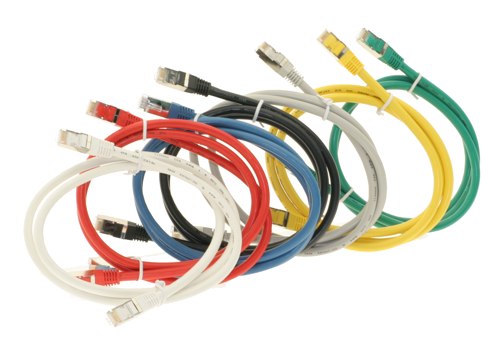
Structured Cabling’s Six Subsystems – Part 2
 As mentioned in Part 1, a structured cabling system is a type of open network structure that can be used by data, telephony, access control, building automation, and other systems. Its advantages are operational flexibility and economy. Part 2 will describe each of structured cabling's six subsystems below.
As mentioned in Part 1, a structured cabling system is a type of open network structure that can be used by data, telephony, access control, building automation, and other systems. Its advantages are operational flexibility and economy. Part 2 will describe each of structured cabling's six subsystems below.
The Six Subsystems
1. Entrance Facilities
Entrance facilities house the protection devices, network demarcation points, cables, connecting hardware, and other equipment that connect to private network cabling or the access provider. Connections between the inside building and outside plant cabling are included.
2. Equipment Room
Featuring environment control, the centralized area for telecommunications equipment is typically more complex than a telecommunications room. Usually containing the main cross-connect, it may also house the horizontal and intermediate cross-connects.
3. Backbone Cabling
Backbone cabling provides the interconnections between entrance facilities, telecommunications rooms, equipment rooms, etc. Typically, backbone cabling is comprised of fiber optic cables, intermediate and main cross-connects, mechanical terminations, and patch cables utilized for backbone-to-backbone cross-connections.
4. Telecommunications Room
Housing the terminations of backbone and horizontal cables to connecting hardware with patch cords or jumpers, a telecommunications room may also house the intermediate cross connects or main cross connect for different portions of the backbone cabling system. This space is a controlled environment containing telecommunications equipment, connecting hardware, and splice closures.
5. Horizontal Cabling
Extending from the work area’s telecommunications information outlet to the telecommunications room, the horizontal Network Cabling consists of horizontal cables and mechanical terminations, along with the jumpers and patch cords located in the telecommunications room. The system may also incorporate consolidation points and multi-user telecommunications outlet assemblies.
6. Work Area
The work area’s components typically extend from the telecommunications outlet/connector end of the horizontal cabling system to the work area equipment. At least two telecommunications outlets should be installed in every work area. If utilized, multi-user telecommunications outlet assemblies (MUTOAs) are a component of the work area.
Progressive Office Cabling
Founded in 1986, Progressive Office’s success has been a direct result of years of commitment to seeking solutions on behalf of their clients in the Washington, D.C. and New York City areas. Working together, their cabling teams get cabling installed and operating as fast as possible while minimizing disruption and downtime. Call their toll free number (800) 614-4560 today.


 A
A 
 Riser cables were designed for non-plenum vertical applications like between the floors of multi-story buildings. They are also described as backbone cables. These
Riser cables were designed for non-plenum vertical applications like between the floors of multi-story buildings. They are also described as backbone cables. These 
 Your office
Your office